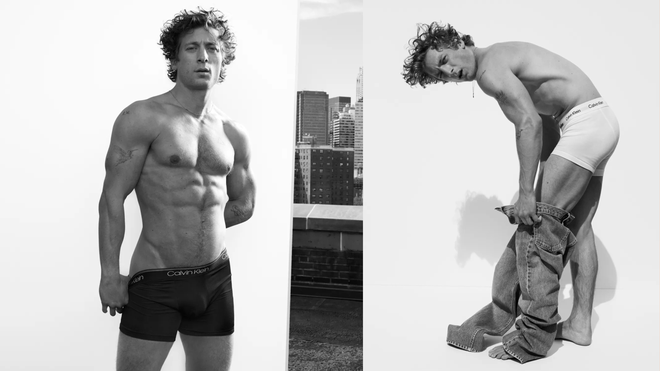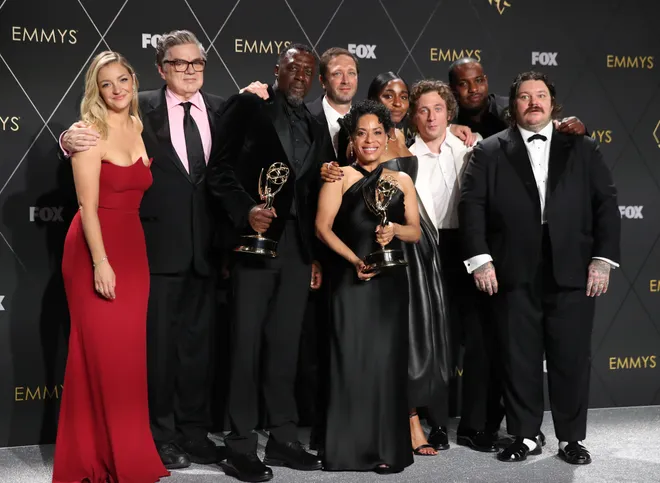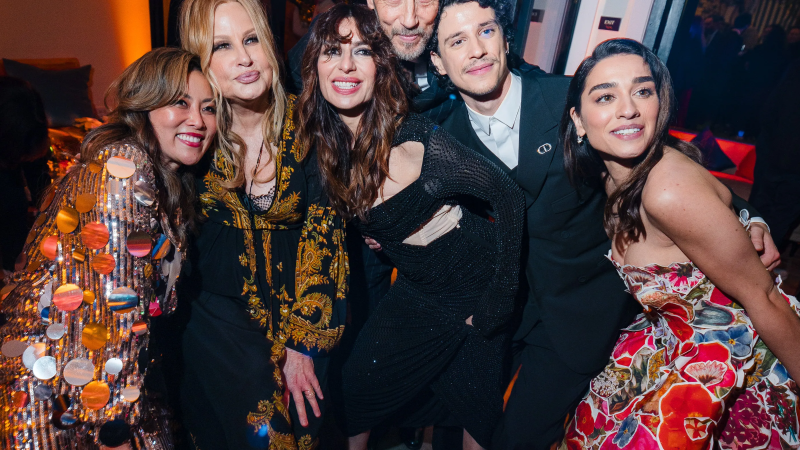We all publicly salivate over Jeremy Allen White. Should we?
If you didn't know Jeremy Allen White before his Calvin Klein photo shoot, you sure did after. The Emmy- and Golden Globe-winning star of "The Bear" posed in underwear for one of the brand's signature ad campaigns.
And people responded − loudly, incessantly and maybe inappropriately. Many thirsted over him on social media: The smoldering stare. The white boxer briefs. The chiseled abs. Journalists asked him about the shoot after his Golden Globe win and even went so far as to ask his (clearly uncomfortable) cast mates about the campaign – with co-star Ayo Edebiri pointing out this man is her co-worker.

But in 2024, in a world after the #MeToo movement launched a global conversation around sex and consent, is it OK to lust after men in this blunt, blatant way? Women in particular have long faced the worst of society's mistreatment in this manner. But experts say the sexualization of men's bodies, too, speaks to a larger issue we must grapple with. As society begins to reckon with its treatment of women, what needs to be said about similar behavior toward men?
Experts say we should seriously consider why we react a certain way when images like these pop up on our screens, and it's important to think about how we engage with and talk about this content.
That 'highly sexual' Jeremy Allen White ad
This type of ad harkens back to the admiration of muscles that dates as far back as ancient Greece. People can justify the act of admiring muscle. But "it's also highly sexual, right?" says University of Vermont history of gender and sexuality expert Paul Deslandes. "Because the underwear ad is completely about accentuating, drawing the eyes' attention to genitalia, to the penis. There's this kind of interesting set of cultural assumptions that feed into how people interpret this."
Erotic and sexual imagery has increased exponentially over the 20th century, especially with the advent of social media. So much so that "the line between what some people would call pornography and some people would call mainstream popular culture, those things sometimes get a little blurred," Deslandes says.
In the 1980s and '90s, as some people began objectifying men as women had long been objectified – think David Hasselhoff in "Baywatch" – many "saw it almost as a kind of turning of the tables," says Deslandes, "which I thought was always sort of intriguing and interesting, but then it raises this question of, 'is it OK for one group and not OK for another?'"
White's photo shoot achieves the rare, coveted ideal that mirrored British model David Gandy's Marks and Spencer campaign in the early 2010s. "It was so overtly sexual, and so overtly about courting both the gaze of men and women," Deslandes says.
As Shannon Gilreath, Wake Forest Law professor of women's, gender and sexuality studies, puts it: "Women are objectified for their physical appearance so thoroughly, so totally, that we often don't even notice. But when a man is in that position, suddenly people start giggling uncomfortably when they're confronted with it on a red carpet or something."

People must watch out if they are only thinking of this person as a sex object and not as a human. "There's a line when their entire being is reduced to their torso, or their bulge, or their biceps," Deslandes says. White's "The Bear" co-stars leapt to White's defense on numerous occasions this awards season when journalists couldn't stop asking about the campaign.
"They were made to feel as somehow this was diminishing him in the moment," Gilreath says. "But of course, that's what we do to women through this process, almost from the cradle."
More details on the ad:'The Bear,' 'Shameless' star Jeremy Allen White strips down to briefs in Calvin Klein campaign
'They know that people are interested'
The fascination with White should have everyone asking questions about their own social media feeds and body image expectations.
The more you engage with this type of content, the more you're likely to see it. Still, "there's a kind of ubiquity of the male body through social media that leads people to think that, of course, an advertising campaign is going to sort of pick up on that, right, it's going to grab that, because they know that it's successful," Deslandes says. "They know that people are interested, they know that they're titillated, they're intrigued."
But "it does also set up unrealistic expectations about body," Deslandes adds, "that there is a tendency to see these men in these advertisements as ideal specimens that younger men in particular, but also older men compare themselves against, and that can be really uncomfortable, and that can make people sit back and reflect on what they perceive as their own deficiencies." Body dysmorphia and eating disorders are very real issues men face.
Going forward, viewers should consider images of any body and wonder: What am I looking at? Why am I looking at it? What am I gaining from this? What am I losing?
And perhaps most important: How has society shaped my view of this person and their gender?
"We are a society that is so thoroughly porn-ified, at this point, that women's bodies are used to sell just about everything," Gilreath says. "So much so that we as a society seem to think that that is just the normal course of nature. And it's only when a man is put in that same situation that we begin to be made uncomfortable by it."
The more you know:Tom Brady's viral affection with his son, fatherhood and our evolving views of masculinity

Disclaimer: The copyright of this article belongs to the original author. Reposting this article is solely for the purpose of information dissemination and does not constitute any investment advice. If there is any infringement, please contact us immediately. We will make corrections or deletions as necessary. Thank you.







